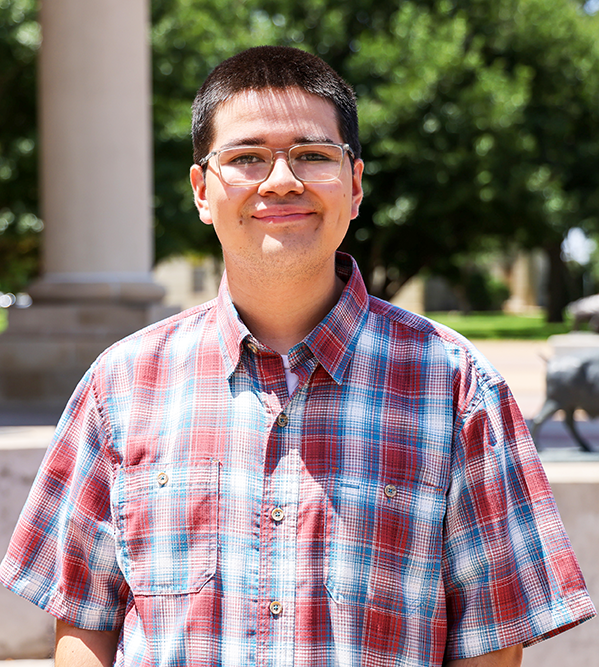Nicholas Dominguez
McNair Scholar 2022
Nicholas Dominguez is a physics major in the College of Agriculture and Natural Sciences at West Texas A&M University. He is a senior anticipating graduation in Spring 2023. After attaining a bachelor’s degree, Nicholas plans to attend a PhD program in theoretical physics where he hopes to research high energy particle physics or dark matter cosmology. His end goal is to be a professor or to be in a management position in the industry sector.
“My favorite part of this whole experience is the preparation for graduate school. This program has helped me immensely in learning how to properly apply to grad school, and the assistance I received with studying for the GRE and review of personal statements has been invaluable to me." - Nicholas Dominguez

"An Overview of the BCS Theory of Superconductivity"
Faculty Mentor:Dr. Keshav Shrestha
In 1911, Heike Kamerlingh Onnes, an experimental physicist at the University of Linden, discovered the first superconductor when he exposed mercury to liquid helium. A superconductor is a material that, once cooled down to a certain temperature known as the critical temperature, starts to exhibit zero electrical resistance and repels external magnetic fields. This was groundbreaking to the field of condensed matter physics and led to Onnes receiving a Nobel Prize in physics for his discovery in 1913. However, no one at the time knew why this phenomenon occurred, and so research ensued to discover what was the cause of this property. The answer finally came in 1957 when three physicists, John Bardeen, Leon Cooper, and John Robert Schrieffer discovered the theory of superconductivity, widely known as “the BCS theory.” This theory could explain most of the discoveries in superconductivity at that time. In this talk, I will focus on the introduction to superconducting materials, their history, and the BCS theory of superconductivity.
